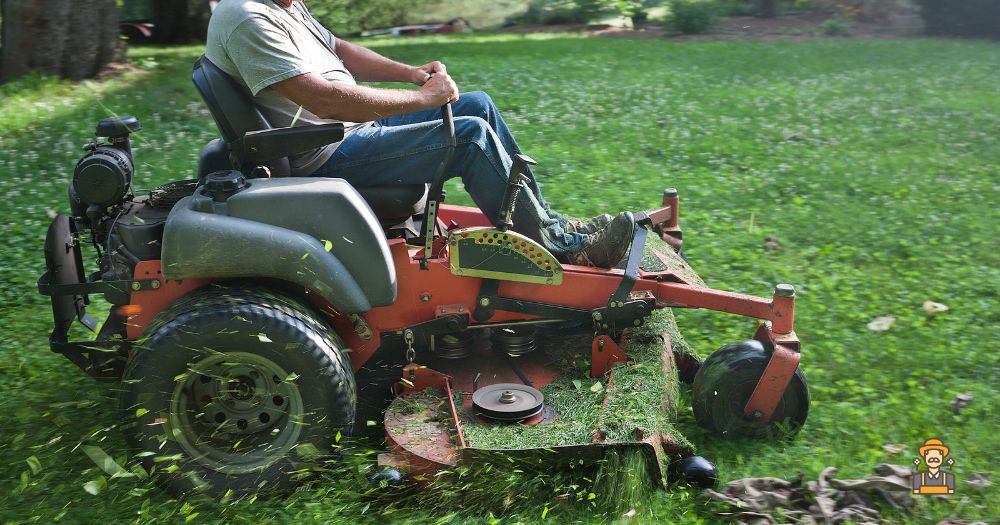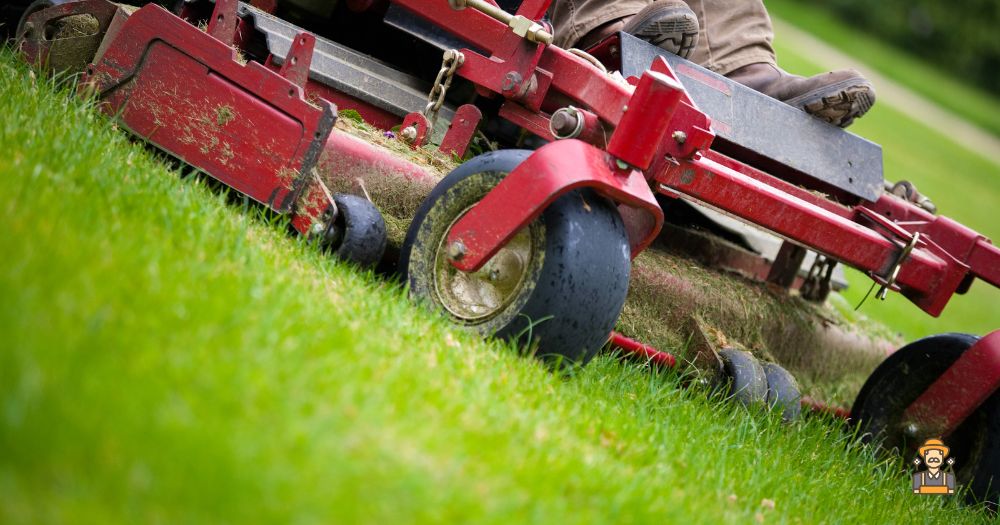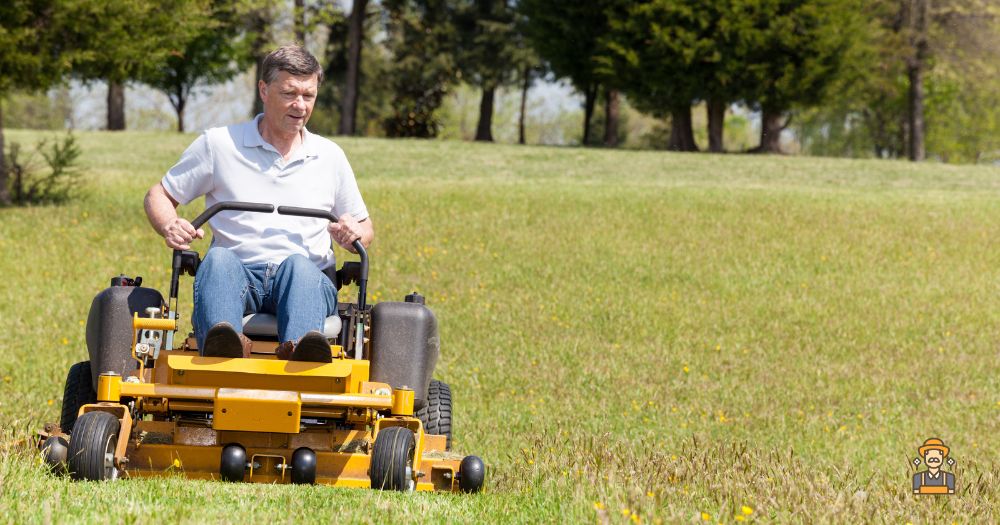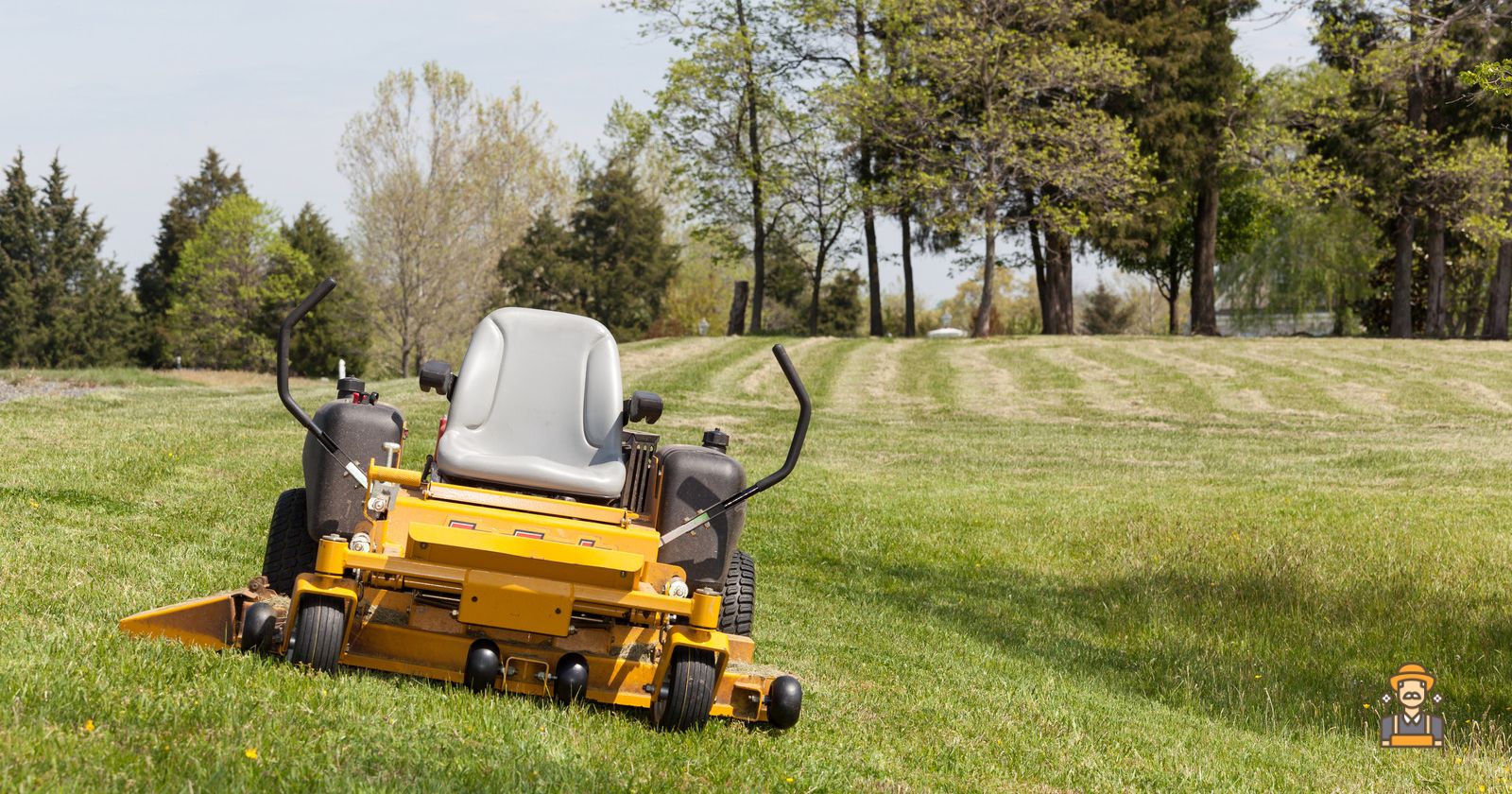As a homeowner or landscaping professional, you may have encountered zero-turn mowers as a popular option for maintaining lawns. These versatile and efficient machines can save you time and effort as they’re designed for quick, agile movement across grassy surfaces. However, it’s crucial for you to be aware of the potential hazards associated with operating these mowers in order to minimize the risk of accidents and ensure safe usage.
Some common dangers of zero turn mowers include overturning, sliding on slopes, and difficulty controlling them at high speeds. These risks can lead to serious injury or property damage if you’re not prepared and don’t take the necessary precautions when operating these machines. In the next sections, we will discuss various safety measures that you can adopt when using zero-turn mowers, helping you to be more confident and secure while maintaining your lawn or workspace.
Dangers of Zero Turn Mowers
Tip-Over Risk
One of the primary dangers of zero turn mowers is their risk of tipping over, especially on slopes or uneven terrain. Due to the machine’s design, with smaller front wheels and the engine at the back, the mower’s weight is concentrated at the rear, making it prone to overturning.
To minimize the tip-over risk, avoid operating zero turn mowers on slopes greater than 15 degrees . Be cautious near water sources, retaining walls, and drop-offs, giving yourself plenty of clearance from potential hazards. Ensure your movements are deliberate and steady, avoiding sudden changes in speed or direction that can trigger a tip-over.
Operator Injury Potential
Operating a zero turn mower presents several risks to the user, including sliding on slopes, difficulties in controlling at high speeds, running over objects, and accidental cuts . To reduce these risks, follow the safety tips shared below:
- Wear appropriate safety gear, such as closed-toe shoes, gloves, and safety goggles.
- Stay focused and maintain a safe operating speed.
- Keep your mower well-maintained and perform regular equipment checkups, especially on the brakes and cutting blades.
- Avoid mowing wet grass, which can cause slipping and sliding.
- Be cautious when approaching objects (e.g., rocks, stumps) that can cause injury or mower damage if run over.
By following these safety measures, you can greatly decrease your risk of injury while operating a zero-turn mower.
Environmental and Safety Concerns
When operating zero turn mowers, it’s essential to be aware of the environmental and safety concerns associated with these machines. To help you understand the potential risks, here are some key points to consider.
Fuel Leaks and Spills
Like any engine-powered equipment, zero turn mowers can potentially experience fuel leaks and spills. These situations pose a threat to the environment, as leaked fuel can contaminate soil, surface water, and groundwater. To minimize this risk, maintain your mower properly and inspect it regularly for any signs of fuel leakage. If you spot a leak, get it repaired as soon as possible. Additionally, try to refuel your mower on an impervious surface, like a driveway or garage floor, to contain any accidental spills.
Noise Pollution

Zero turn mowers are known for their efficiency and maneuverability, but they can also generate significant noise pollution. Prolonged exposure to elevated noise levels can impact both your hearing and overall wellbeing, in addition to disturbing wildlife and neighbors. To help reduce noise pollution, consider investing in a high-quality muffler for your mower’s engine. You should also opt for electric models whenever possible, as they tend to be quieter than gas-powered mowers. Finally, always wear hearing protection while operating your zero turn mower and avoid mowing during early morning or late evening hours when noise is more likely to be disruptive.
Taking these environmental and safety concerns into account allows you to operate your zero turn mower more responsibly, protecting yourself and the environment. Stay informed and maintain your equipment to ensure a greener, safer mowing experience.
Factors Influencing Dangers
In this section, we’ll discuss the factors that can increase the dangers of using zero-turn mowers. By understanding these factors, you can better prepare yourself and take the necessary precautions to ensure a safer operation.
Terrain and Slopes

Zero-turn mowers can be dangerous on uneven terrain and steep slopes, as they have a higher risk of rollovers or tipping over, as mentioned by the U.S. Occupational Safety and Health Administration (OSHA). To minimize the risk, you should:
- Keep your speed slow when operating on slopes and uneven terrain.
- Avoid changing direction suddenly when moving uphill or downhill.
- Wait until you are on level ground before executing turns.
Weather Conditions
Adverse weather conditions can increase the risk of accidents when using zero-turn mowers. Slippery surfaces caused by rain, frost or dew can reduce traction and stability, increasing the likelihood of losing control. To protect yourself from weather-related risks:
- Avoid mowing when the grass is wet or frosty.
- If possible, mow during the early morning or late afternoon when the temperature is cooler and there is less direct sun.
- Always monitor weather forecasts to plan your mowing schedule accordingly.
Operator Experience

Your level of experience with zero-turn mowers is a significant factor in the potential dangers. Inexperienced operators are more likely to make mistakes or overlook safety guidelines, which can lead to accidents. To gain experience and operate the mower safely:
- Start by practicing with your zero-turn mower on level ground before moving to more difficult terrains.
- Read the owner’s manual thoroughly to familiarize yourself with the machine’s features and recommended operating procedures.
- Always follow the manufacturer’s guidelines for maintenance and service to ensure your mower remains in good working condition.
Prevention and Safety Tips
In order to avoid the dangers of zero-turn mowers and ensure safe operation, follow these prevention and safety tips.
Proper Maintenance
Regular maintenance of your zero-turn mower is essential for its performance and safety. Some key maintenance tasks include:
- Checking tire pressure and adjusting it as needed to ensure proper traction (Powered Outdoors)
- Regularly inspecting belts and pulleys for wear, replacing them when necessary
- Keeping the mower deck clean and free of debris to prevent clogging
- Checking and changing the engine oil, air filter, and spark plug according to the manufacturer’s recommendations
Operator Training
Before using a zero-turn mower, familiarize yourself with its various controls and safety features. Operator training is crucial in order to:
- Understand how the mower functions
- Learn how to start, stop, and control the machine properly
- Identify potential hazards while operating the mower
If you’re a beginner, consider using a less aggressive model first to get used to the machine and avoid accidents (Sawinery).
Safe Operation Practices
Finally, adopting safe operating practices can significantly reduce the risk of accidents. Some safety tips include:
- Avoiding mowing on slopes greater than 15 degrees or on unstable surfaces (Toro)
- Operating the mower at a controlled, steady speed and avoiding sudden changes in direction
- Wearing appropriate safety gear such as gloves, safety glasses, and ear protection
- Clearing the lawn of any debris, obstacles, or potential hazards before mowing
By following these prevention and safety tips, you’ll be better prepared to operate a zero-turn mower with minimal risk.
FAQs
How much slope can a zero turn mower handle?
When it comes to slopes, zero turn mowers can typically handle inclines up to 15 degrees, but always check the manufacturer’s recommendations to be on the safe side.
Can a zero turn mower flip over?
Yes, these bad boys can indeed flip if used improperly, especially on steep slopes or uneven terrain—so always exercise caution and follow those safety tips we talked about earlier.
How many years should a zero-turn mower last?
A well-maintained zero-turn mower can last you anywhere from 7 to 10 years or even more, depending on the quality of the machine and how you treat it.
Additional Lawn Mower Resources
If you are looking for more tutorials, walkthroughs and troubleshooting for Lawn Mowers, here are our most recent posts:
And there you have it, folks! We’ve journeyed together through the ins and outs of zero turn mower safety, arming you with three essential tips to help you navigate your lawn care adventures with confidence. Remember, a well-manicured lawn is a beautiful thing, but it’s not worth risking your safety or that of others around you.
So, as you hop on your trusty zero turn mower and embark on your next lawn care mission, keep these tips in mind and give yourself a high-five for being a responsible, safety-conscious lawn warrior. After all, the real key to a stunning lawn is not just about how it looks, but also the care and attention you put into every aspect of the process—including your own well-being.
Now go forth, conquer that grass, and show the world just how amazing your lawn can be, all while keeping safety at the forefront of your mind. Happy mowing, my fellow lawn aficionados!
